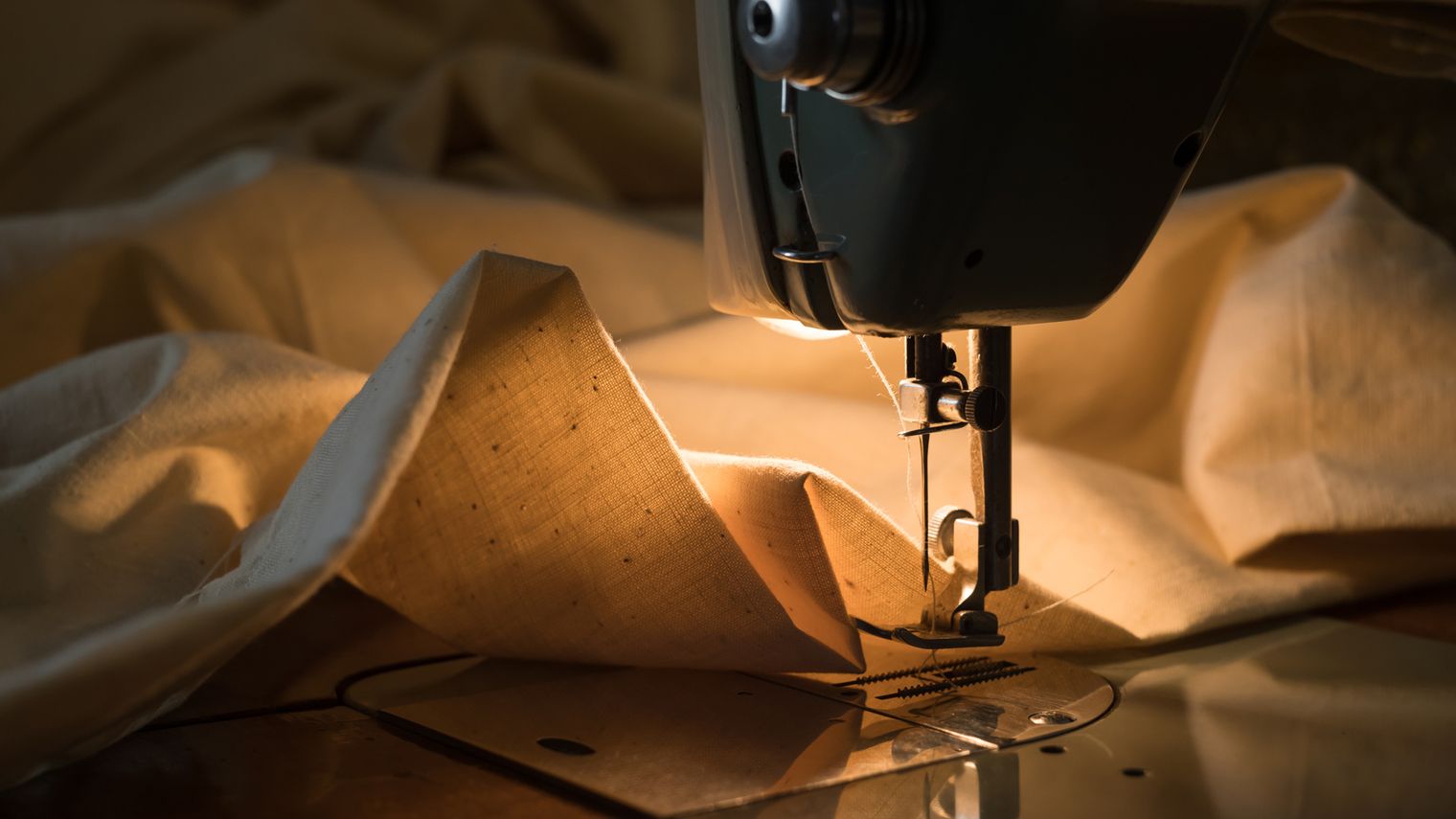How Sewing Has Enriched My Quality of Life While Living with MS
May 16, 2022
Content created for the Bezzy community and sponsored by our partners. Learn More

Evgenij Yulkin/Stocksy United
How taking up a hobby gave me a renewed zest for life
When my husband J.P. and I decided to renovate our new house together, I fantasized about framing doors and installing cabinets, just like Amy Matthews, the invincible tool-belted HGTV maven.
Surely with enough grit and perseverance, anything was possible. Or was it?


Hindered by symptoms
The realities of construction and my long-term battle with multiple sclerosis (MS) quickly dampened my gusto. I ended up doing more sweeping than nailing and more organizing than heavy lifting.
It wasn’t that I didn’t want to learn, I just didn’t have the strength and balance of my husband, a former sculptor who was capable of erecting rock walls and waterfalls for his clients.
My MS challenged me physically, but I was still able to contribute to the renovations by working in small increments and resting frequently. I painted the walls, section by section, and helped wherever possible. But once this work was complete, I ached to contribute in another more meaningful way.
Searching for alternatives
That’s when I noticed my mother’s old sewing machine in the corner of our pantry. Maybe, I thought, I could make curtains.
Because we needed privacy, we’d settled on bland beige panels from a big-box store for our living room windows. But I longed for something more personalized for other spaces such as our bedroom.
Growing up, I had always admired my mother’s ability to sew. Despite her occasional groans when she needed to rip out a seam and start again, her mastery made sewing seem easy.
Yet I also recalled her glee as she handed over the machine for good. “It’s yours now,” she’d said. “I’m done!”
Getting started
I did assist my mom from time to time as a teenager, so I wasn’t a complete novice. However, when I plugged in the machine for the first time in years, I realized I had completely forgotten basics such as threading the machine and loading the bobbin, the little reel of thread that catches the top thread from the spool to make a tight stitch. Not to mention the fact that I had no idea how to design curtains or even begin to actually make them.
With my mother living more than an hour away, I turned to the next best thing: YouTube.
After some surfing, I found an instructional video that matched my skill level. I learned how to make flat, lined panels that could be clipped to metal rings and hung on rods.
The YouTube expert made it look like a snap, but even so, my first attempt didn’t go so well. I misjudged the width of the completed curtain, bringing to mind the old saying, “measure twice, cut once.” Next, I accidentally sewed part of a panel onto itself. My constant companion wasn’t just the machine’s instruction manual, but the same seam ripper my mom used years ago.
Discovering the magic of sewing
Even as I struggled to master curtain-making, something magical was happening to my body.
One of my MS symptoms is the inability to walk in a straight line. It’s maddening because I veer slightly to the right or left. But as I fed the material through the machine and watched it surge ahead with a straight seam, my heart lightened. Maybe I couldn’t walk in a straight line anymore, but I could sure sew one.
I also suffer from numbness on the bottom of my feet, so it took a little practice to figure out how much pressure to apply to the pedal of the machine. But this act became an exercise in self-awareness, and it reminded me of the importance of a mind-body connection.
As I sewed, I found it necessary to resist my tendency to multitask. I quickly learned one simply can’t bake cookies while trying to make curtains. Concentrating on one action at a time, whether cutting, pinning, or sewing, gave me a welcome mental break.
What really astonished me was that while I focused my active brain on sewing, my subconscious brain was spinning with new waves of creativity. As counterintuitive as it sounds, idea after idea for new essays and poems kept springing up out of nowhere as I sewed. Even more magic.
My ‘renewed zest for life’
Above all else, I found the steady hum of the machine comforting, a reminder of my productivity and ability to contribute to our home.
After I finished our curtains and hung them, I graduated from simple panels to pillows and placemats. Next, I created a cushion for Mom’s garden bench, made a slip clover for our own ottoman, and eventually crafted potholders, fabric coasters, and even a dog coat.
My hobby has given me a renewed zest for life that has helped me cope with my illness. Even though there are still some things I can’t do, like climbing onto scaffolding or wielding a jackhammer like Amy Matthews, the act of sewing has proven that there are plenty of other useful tasks within my capability.
And with a little practice and perseverance, I can even master them.
Finding your own hobbies
I encourage you to consider cultivating a hobby of your own, depending on your interests and physical limitations. Many activities may be accomplished within your own home, such as writing poetry, painting, or cooking. You might also enjoy photography, birdwatching, or knitting.
Below are some tips to help you incorporate a hobby into your life while living with chronic illness.
Be patient
As I learned while sewing, every error is fixable. The seam ripper became my friend, as did the discarded pieces of fabric from my mistakes. These became throw pillows or coasters.
Don’t give up
If success doesn’t come easily, stop for a little while and take a break. Or do something else entirely.
My measuring errors tended to happen at the end of the day when I was already tired. That was when I knew it was time to turn off the machine.
Pace yourself
Go slowly and don’t set unrealistic goals. In my case, I didn’t attempt to make curtains for all the windows in my bedroom in one day. Two panels were my limit, and just by making two each day, in less than a week I had finished eight, which covered all four windows in the room.
One day, I hope to replace the 8-foot panels in our living room with custom curtains. But I’ll take my time.
The buds on our cherry trees remind me that spring is on the way, and I’m looking forward to another favorite hobby of mine: gardening.
Fact checked on May 16, 2022


Like the story? React, bookmark, or share below:
Have thoughts or suggestions about this article? Email us at article-feedback@bezzy.com.
About the author